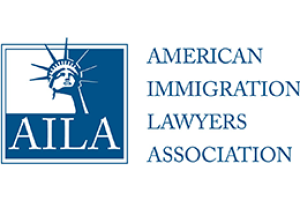Evidence to Demonstrate Qualification for Deferred Action
Evidence
The following chart provides examples of documentation you may submit to demonstrate you meet the guidelines for consideration of deferred action under this process. Please see the instructions of Form I-821D, Consideration of Deferred Action for Childhood Arrivals, for additional details of acceptable documentation.
| Examples of Documents to Submit to Demonstrate you Meet the Guidelines | |
|---|---|
| Proof of identity | – Passport – Birth certificate with photo identification – School or military ID with photo – Any U.S. government immigration or other document bearing your name and photo |
| Proof you came to U.S. before your 16th birthday | – Passport with admission stamp – Form I-94/I-95/I-94W – School records from the U.S. schools you have attended – Any Immigration and Naturalization Service or DHS document stating your date of entry (Form I-862, Notice to Appear) – Travel records – Hospital or medical records |
Proof of immigration status | – Form I-94/I-95/I-94W with authorized stay expiration date – Final order of exclusion, deportation, or removal issued as of June 15, 2012 – A charging document placing you into removal proceedings |
| Proof of Presence in U.S. on June 15, 2012 | – Rent receipts or utility bills – Employment records (pay stubs, W-2 Forms, etc) – School records (letters, report cards, etc) – Military records (Form DD-214 or NGB Form 22) – Official records from a religious entity confirming participation in a religious ceremony – Copies of money order receipts for money sent in or out of the country – Passport entries – Birth certificates of children born in the U.S. – Dated bank transactions – Social Security card – Automobile license receipts or registration – Deeds, mortgages, rental agreement contracts – Tax receipts, insurance policies |
Proof you continuously resided in U.S. since June 15, 2007 | |
| Proof of your student status at the time of requesting consideration of deferred action for childhood arrivals | – School records (transcripts, report cards, etc) from the school that you are currently attending in the United States showing the name(s) of the school(s) and periods of school attendance and the current educational or grade level – U.S. high school diploma or certificate of completion – U.S. GED certificate |
| Proof you are an honorably discharged veteran of the U.S. Armed Forces or the U.S. Coast Guard | – Form DD-214, Certificate of Release or Discharge from Active Duty – NGB Form 22, National Guard Report of Separation and Record of Service – Military personnel records – Military health records |
May I File Affidavits as Proof That I Meet the Guidelines for Consideration of Deferred Action for Childhood Arrivals?
Affidavits generally will not be sufficient on their own to demonstrate that you meet the guidelines for USCIS to consider you for deferred action for childhood arrivals. However, affidavits may be used to support meeting the following guidelines only if the documentary evidence available to you is insufficient or lacking:
- A gap in the documentation demonstrating that you meet the five year continuous residence requirement; and
- A shortcoming in documentation with respect to the brief, casual and innocent departures during the five years of required continuous presence.
If you submit affidavits related to the above criteria, you must submit two or more affidavits, sworn to or affirmed by people other than yourself, who have direct personal knowledge of the events and circumstances. Should USCIS determine that the affidavits are insufficient to overcome the unavailability or the lack of documentary evidence with respect to either of these guidelines, it will issue a Request for Evidence, indicating that further evidence must be submitted to demonstrate that you meet these guidelines. USCIS will not accept affidavits as proof of satisfying the following guidelines:
- You are currently in school, have graduated or obtained a certificate of completion from high school, have obtained a general education development certificate, or are an honorably discharged veteran from the Coast Guard or Armed Forces of the United States;
- You were physically present in the United States on June 15, 2012;
- You came to the United States before reaching your 16th birthday;
- You were under the age of 31 on June 15, 2012; and
- Your criminal history, if applicable.
If the only evidence you submit to demonstrate you meet any of the above guidelines is an affidavit, USCIS will issue a Request for Evidence, indicating that you have not demonstrated that you meet these guidelines and that you must do so in order to demonstrate that you meet that guideline.
Will USCIS Consider Circumstantial Evidence That I Have met Certain Guidelines?
Circumstantial evidence may be used to establish the following guidelines and factual showings if available documentary evidence is insufficient or lacking and shows that:
- You were physically present in the United States on June 15, 2012;
- You came to the United States before reaching your 16th birthday;
- You satisfy the five year continuous residence requirement, as long as you present direct evidence of your continued residence in the United States for a portion of the required five-year period and the circumstantial evidence is used only to fill in gaps in the length of continuous residence demonstrated by the direct evidence; and
- Any travel outside the United States during the five years of required continuous presence was brief, casual, and innocent.
However, USCIS will not accept circumstantial evidence as proof of any of the following guidelines to demonstrate that you:
- Were under the age of 31 on June 15, 2012; and
- Are currently in school, have graduated or obtained a certificate of completion from high school, have obtained a General Education Development (GED) certificate, or are an honorably discharged veteran of the Coast Guard or Armed Forces of the United States.
For example, if you do not have documentary proof of your presence in the United States on June 15, 2012, you may nevertheless be able to satisfy the guideline circumstantially by submitting credible documentary evidence that you were present in the United States shortly before and shortly after June 15, 2012, which under the facts presented may give rise to an inference of your presence on June 15, 2012 as well. However, circumstantial evidence will not be accepted to establish that you have graduated high school. You must submit direct documentary evidence to satisfy that you meet this guideline.
Contact the experienced Chicago immigration lawyers in our office for a consultation on how to qualify for Deferred Action for Childhood Arrivals.









